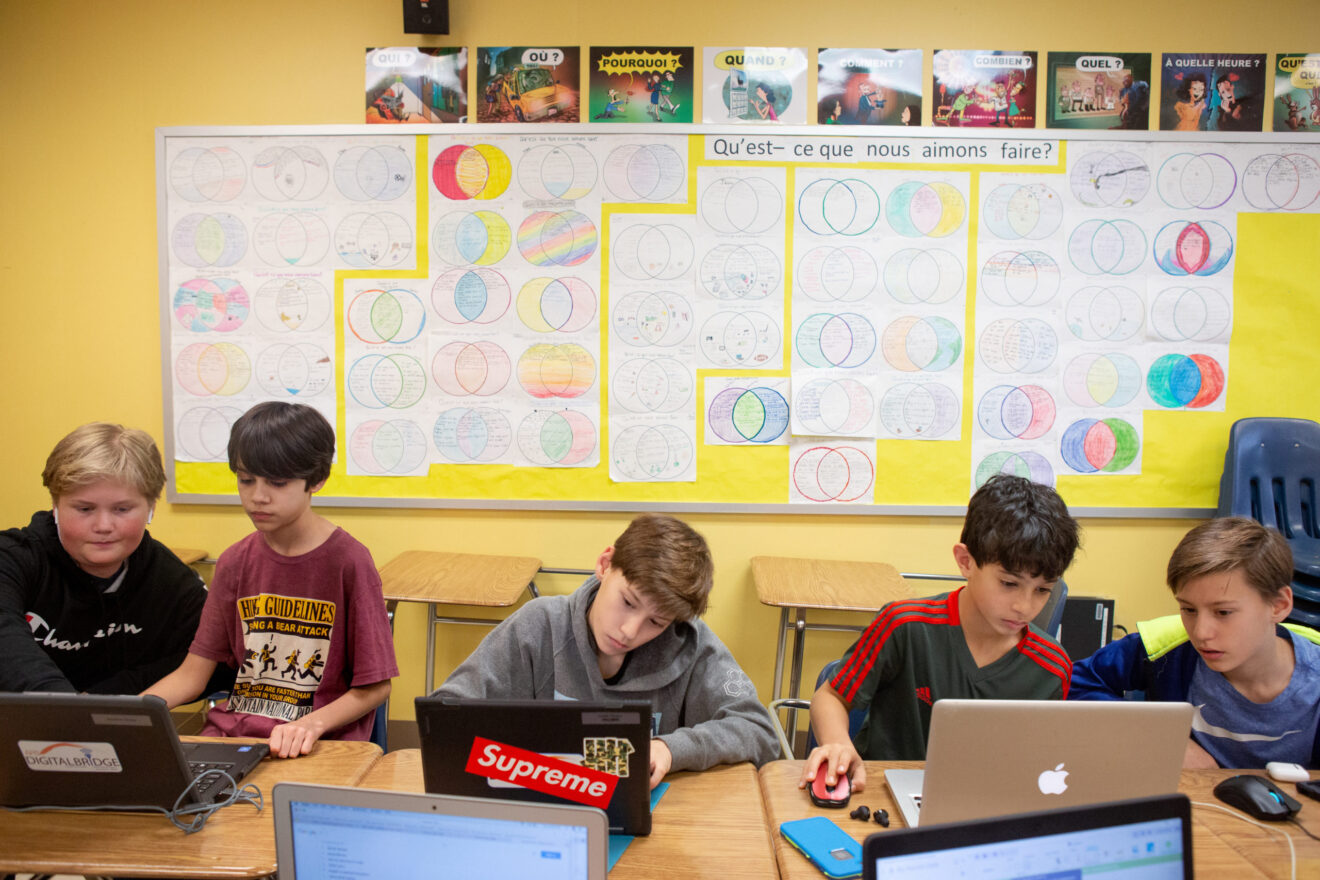Did you know that co-design is the superpower of collaboration? Co-design takes collaboration to the next level. Collaboration may build teams, but co-design builds communities. When co-designing, learners dive in deep because they have been intentionally included throughout the process. As educator and social theorist Laurenellen McCann describes it, the process of co-design is “building with, not for.”

To understand co-design, think of it as providing a map, not a destination. It centers the voices of the students who are directly affected by any program or plan. Co-design arises from a mutual decision to create together, in that students are invited to help design their own learning, whether that’s picking the project they do to show their knowledge or the topic of study itself.
Of course, this process does not look the same for everyone — educators are often asked to create resources that must work for very diverse groups of learners. But across these groups, co-design begins when we support deep relationships and trust between educators and students. We need to also foster a sense of agency: Students have to feel that what they create together can continue to be iterated and remixed as their needs change.
I believe educators can engage students more equitably in creative coding when we embrace co-design practices while building on the foundation of the Four P’s of Creative Learning: projects, passions, peers and play. Learners create projects based on their passions and engage with their peers, all while experiencing play that helps them progress to build new understandings. This process provides many opportunities for students to take part in and creatively express themselves through visual, kinesthetic and oral models. And it enables educators to shift the focus from what students produce (their output) to how we can create together (our process).
How can educators establish co-design in the classroom?
To build the conditions for co-design in the classroom, think about how you welcome students’ perspectives and how they have choice in what and how they learn.
You can start by regularly creating learning experiences that empower students to voice their perspectives and make decisions for themselves and their peers. Prioritize relationship-building among students to establish trust and understanding of each other’s perspectives. Students can push each other to think of how to engage other viewpoints. And with each iteration, they can reflect on what they’ve learned and want to redefine.
For example, at the Scratch Education Collaborative, we encourage young people — we call them Scratchers — to design creative coding projects that capture their own voices. We see projects that reflect all kinds of passions: from young people using their coding skills to share their thoughts about social issues (such as Black Lives Matter) with others to students creating animations for others to learn about the history that matters to them.
You can encourage students to choose projects that are personally meaningful. If a student is passionate about art or music, provide them with the choice to learn within the realm of what they are interested in. As another example, when a Scratcher makes a copy of someone else’s project and modifies it to add their own ideas (for example, by changing scripts or costumes), the resulting project is called a “remix.” Every project shared to the Scratch website can be remixed, as long as credit is given. We believe that remixing other people’s projects is a great way to encourage students to own their learning.
Differing perspectives allow for self-discovery
To produce the best possible results with the highest impact, co-design requires a shift toward transparency, trust and empathy. This process derives its greatest strength from tapping into the unique perspectives, skills and experiences of both students and educators. And when educators co-design learning with students, we end by facilitating self-discovery for all.
Elaine Atherton is the director of the Scratch Education Collaborative at the Scratch Foundation. Elaine has over 14 years of experience in supporting educators and children, most recently as the director of academics for Duke TIP, a Durham, N.C.-based organization that focused on providing learning experiences for academically gifted students.
Opinions expressed by SmartBrief contributors are their own.
_________________________
Subscribe to SmartBrief’s FREE email newsletter to see the latest hot topics on EdTech. It’s among SmartBrief’s more than 250 industry-focused newsletters.
